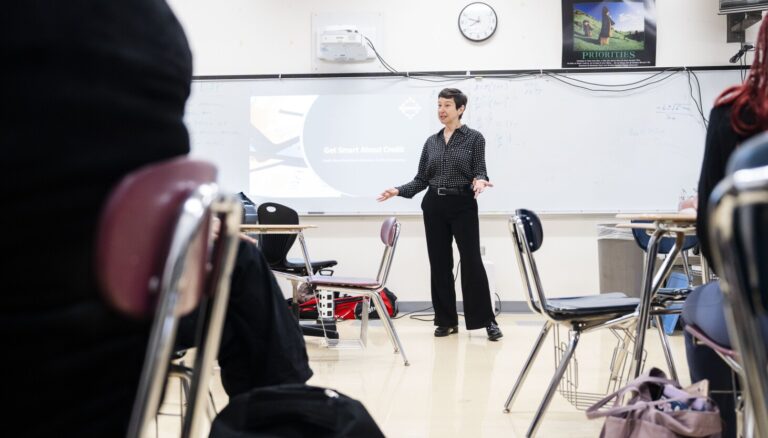When Erica Wax teaches financial literacy to high school students, “they ask questions about credit cards, paying off student loans, things like that,” she says.
Mr. Wax is a former bankruptcy attorney and business litigator for over 30 years and serves as Chairman of Credit Abuse Prevention Education Chicago (CARE Chicago). The nonprofit, a local chapter of a national organization, provides financial literacy instruction to high school students in the Chicago area. Last year we taught about 4,000 children.
“Students have a million questions because they've had enough experience to know what they don't know,” Wax says.
In recent years, Illinois has become one of a growing number of states to add financial literacy to the core curriculum. The Illinois State Board of Education includes the subject in its social science standards, and a bill was introduced in the Legislature last year that would require students to take a financial literacy course.
However, the 2023 National Report on State Efforts to Improve Financial Literacy gave Illinois a “B” grade, and the state is projected to remain at that level in 2028. Part of the reason is that financial education can be delivered as part of other courses such as mathematics or coursework. Civics rather than as a separate class.
A report from the Center for Financial Literacy at Champlain College in Burlington, Vermont, predicts that 23 states will earn an “A” by 2028, but only seven states earned an “A.”
Wax said the level of financial literacy among Chicago-area high school students can vary widely from district to district or school to school.

Erica Wax, CARE Chicago Chair;
“Based on the questions I received in class, I can tell you that many high school students have debit cards, and many of them know the difference between a debit card and a credit card. But they don't necessarily understand the nuances. “There's no such protection,” she said, noting that credit cards offer protection against fraudulent charges while debit cards don't.
Similarly, students entering college may not understand the difference between scholarships and loans, and are often unaware that they can negotiate financial aid packages.
In Chicago Public Schools, financial literacy in high schools is offered through a curriculum called “Empowered,” which outlines a nine-week instructional plan that meets the district's graduation requirements. This course covers his seven required subjects: Economic Concepts, Money Management, Banking, Credit, Insurance, Investments, and Consumer Protection.
More than 300 high school teachers are trained to teach financial education units, and the district supports the professional development of more than 50 new teachers each year.
But like other districts across the state, there is flexibility in how instruction is delivered. One school might offer a stand-alone financial literacy course, another might include the material in an advanced course focused on postsecondary education and planning, and a third might include instruction in a math course .
The district is piloting mini-financial education lessons for elementary school students in collaboration with outside partners such as the Chicago Mercantile Exchange. This curriculum will be fully rolled out next year.
Vince Schaub, CEO of the National Council of Financial Educators, said the initiative represents progress but is not enough.
“Public schools are failing their students” when it comes to financial literacy, he said.
Although the reasons may be complex, he pointed to an outdated approach to the core subject matter that has not changed significantly over the past century.
“It's a completely different world today,” he said. “I think we need more independent classes that focus on short-term life events as students graduate, like moving into their own apartment, buying a car, or even how to interview for a job. .”
But a full semester of instruction may not be enough, he said, “Will I be able to speak a foreign language after one semester?”
The organization will roll out a campaign in Illinois this spring aimed at providing quality programs and resources, promoting support for financial education, and building local relationships with school districts, community groups, and other organizations. intend to do something.
Schaub said the campaign, first introduced in California, will address gaps in testing and assessment and support teachers who may not have the training.
“We need to make it more fun and interesting,” he said.
CARE Chicago's Wax agreed, saying that while he is encouraged by students' interest in personal finance topics, sometimes the discussion needs to be brought back to the core curriculum.
“There's always at least one student who wants to talk about stocks,” Wax says.


